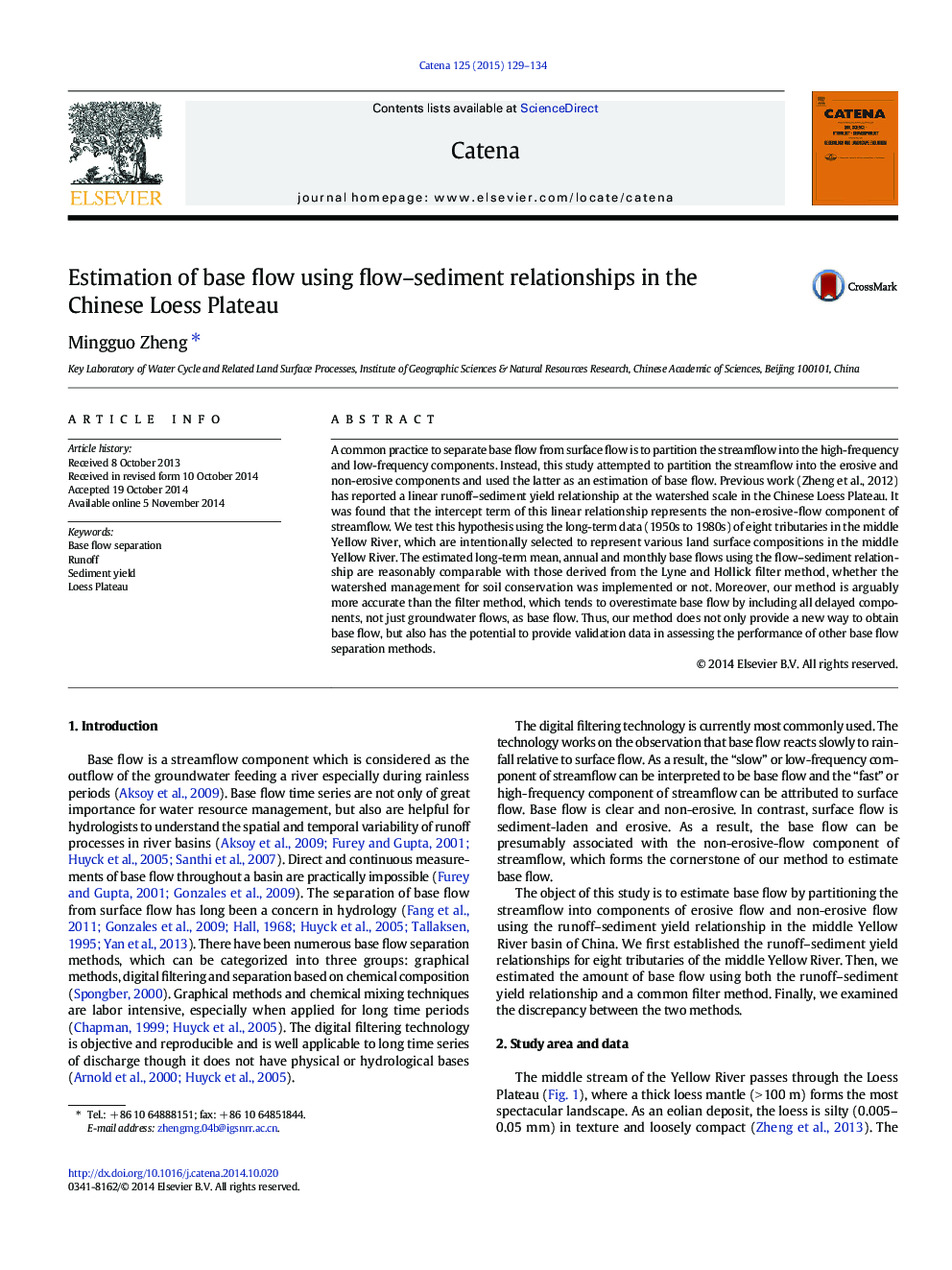| کد مقاله | کد نشریه | سال انتشار | مقاله انگلیسی | نسخه تمام متن |
|---|---|---|---|---|
| 4571285 | 1629227 | 2015 | 6 صفحه PDF | دانلود رایگان |
• A linear runoff–sediment yield relationship in the Chinese Loess Plateau
• The intercept term of the linear relationship represents the non-erosive-flow component of streamflow.
• The non-erosive-flow component of streamflow can be interpreted to be the base flow.
• Estimation of base flow using flow–sediment relationships is arguably more accurate than the common filter method.
A common practice to separate base flow from surface flow is to partition the streamflow into the high-frequency and low-frequency components. Instead, this study attempted to partition the streamflow into the erosive and non-erosive components and used the latter as an estimation of base flow. Previous work (Zheng et al., 2012) has reported a linear runoff–sediment yield relationship at the watershed scale in the Chinese Loess Plateau. It was found that the intercept term of this linear relationship represents the non-erosive-flow component of streamflow. We test this hypothesis using the long-term data (1950s to 1980s) of eight tributaries in the middle Yellow River, which are intentionally selected to represent various land surface compositions in the middle Yellow River. The estimated long-term mean, annual and monthly base flows using the flow–sediment relationship are reasonably comparable with those derived from the Lyne and Hollick filter method, whether the watershed management for soil conservation was implemented or not. Moreover, our method is arguably more accurate than the filter method, which tends to overestimate base flow by including all delayed components, not just groundwater flows, as base flow. Thus, our method does not only provide a new way to obtain base flow, but also has the potential to provide validation data in assessing the performance of other base flow separation methods.
Journal: CATENA - Volume 125, February 2015, Pages 129–134
